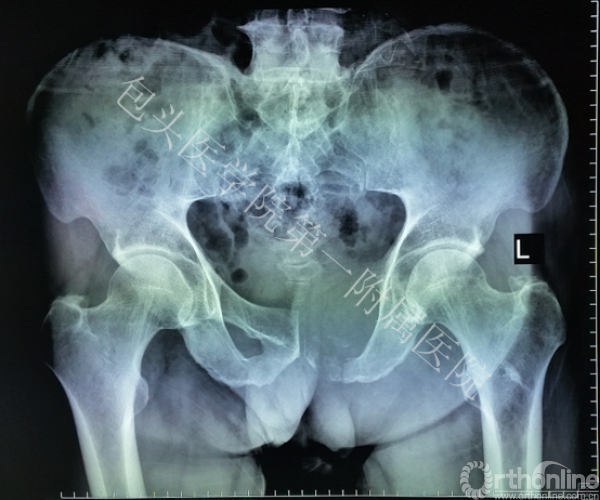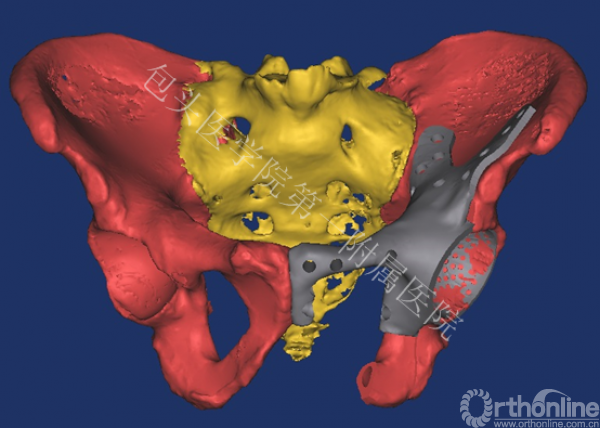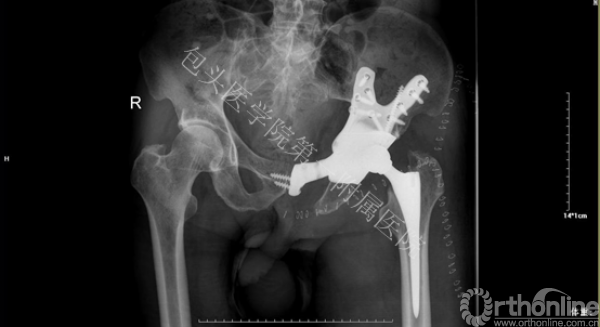 3D printing has been used more and more often in medical practice. Doctors and surgeons are beginning to really realize the benefits associated with the use of this technology. For one man, named Mr. Liu, 3D printing aided in helping him turn what could have been a disastrous outlook on life into a phenomenal, heart-felt story.
3D printing has been used more and more often in medical practice. Doctors and surgeons are beginning to really realize the benefits associated with the use of this technology. For one man, named Mr. Liu, 3D printing aided in helping him turn what could have been a disastrous outlook on life into a phenomenal, heart-felt story.
The 65-year-old Liu was living quite the normal life, until about six months ago when he began suffering from leg discomfort. Upon arrival at the hospital, doctors told him he had a small cyst, and that it was nothing to worry about. After a few week went by, Liu realized that his discomfort was only getting worse and worse by the day, as the cyst began to and continued to grow, compressing nerves in its path. It was getting so bad that he was no longer able to sleep at night or continue to work. He literally went to hospital after hospital and found that no one was able to provide him with any help. That is until he visited the First Affiliated Hospital of Baotou Medical College, where he was introduced to an orthopedic surgeon by the name of Dr. Dong Lele. Dr. Lele found that Liu was suffering greatly, and made it his goal to find a solution. After CT scans were taken and other tests run, he discovered that Liu had a massive tumor attached to his pelvic bone. Not only was this tumor present, but it had actually eaten away at Liu’s bone.
“Liu had a tumor located on his pelvic ring on the left hand side of the pelvis when he was admitted into the hospital,” Dr. Dong Lele explained. “After conducting CT and MRI scans, we found that he had a 12 × 14 × 8.4 cubic centimeter tumor in his pelvis, and the tumor had even ‘eaten’ part of the bones. It was causing pressure on the pelvic area, squeezing into his surrounding nerves and muscle tissue, thus causing lower limb paralysis, and pain.”
Most hospitals simply did not see a safe, effective option of treatment, thus they pretty much turned him away, while other hospitals would have performed highly risky surgeries which would have left Liu disabled and paralyzed for the rest of his life. This was because of the proximity of the tumor to Liu’s blood vessels and nerves. There really were no treatment options available based on traditional practice.
 Dr. Lele, however, is not a traditional doctor. He is constantly researching the latest breakthrough technologies, one of which is that of 3D printing. Teaming with Xi’an Jiatong University’s State Key Laboratory for Manufacturing Systems Engineering, Dr. Lele was able to take preoperative CT scan data and model an exact replica of the area in which the tumor had eaten away. Then using a selective laser sintering 3D printer, the team was able to 3D print a titanium prosthesis, matching exactly to Liu’s original anatomy. The printing process only took about 4 hours to complete. Titanium is the perfect solution for a surgery like this as it is rarely rejected by the human body. It is a super lightweight, very hard, and very strong material.
Dr. Lele, however, is not a traditional doctor. He is constantly researching the latest breakthrough technologies, one of which is that of 3D printing. Teaming with Xi’an Jiatong University’s State Key Laboratory for Manufacturing Systems Engineering, Dr. Lele was able to take preoperative CT scan data and model an exact replica of the area in which the tumor had eaten away. Then using a selective laser sintering 3D printer, the team was able to 3D print a titanium prosthesis, matching exactly to Liu’s original anatomy. The printing process only took about 4 hours to complete. Titanium is the perfect solution for a surgery like this as it is rarely rejected by the human body. It is a super lightweight, very hard, and very strong material.
The surgery, which took place in the middle of March, appears to have been a success, as Liu is still recovering from the operation, and is expected to make a complete recovery. In a matter of months, Liu went from leading a normal live to receiving a horrendous prognosis of lifelong pain and paralysis to finding his savior in Dr. Dong Lele. This was all made possible by a doctor willing to think outside of the box and the amazing technology we all refer to as 3D printing.
What do you think about this story? Will we begin to see more surgeons around the world utilizing 3D printing technology in the operating room? Discuss in the 3D Printed Titanium Pelvic Implant forum thread on 3DPB.com.
Subscribe to Our Email Newsletter
Stay up-to-date on all the latest news from the 3D printing industry and receive information and offers from third party vendors.
You May Also Like
Precision at the Microscale: UK Researchers Advance Medical Devices with BMF’s 3D Printing Tech
University of Nottingham researchers are using Boston Micro Fabrication‘s (BMF) 3D printing technology to develop medical devices that improve compatibility with human tissue. Funded by a UK grant, this project...
3D Printing Webinar and Event Roundup: April 21, 2024
It’s another busy week of webinars and events, starting with Hannover Messe in Germany and continuing with Metalcasting Congress, Chinaplas, TechBlick’s Innovation Festival, and more. Stratasys continues its advanced training...
3D Printing Webinar and Event Roundup: March 17, 2024
It’s another busy week of webinars and events, including SALMED 2024 and AM Forum in Berlin. Stratasys continues its in-person training and is offering two webinars, ASTM is holding a...
3D Printed Micro Antenna is 15% Smaller and 6X Lighter
Horizon Microtechnologies has achieved success in creating a high-frequency D-Band horn antenna through micro 3D printing. However, this achievement did not rely solely on 3D printing; it involved a combination...

































